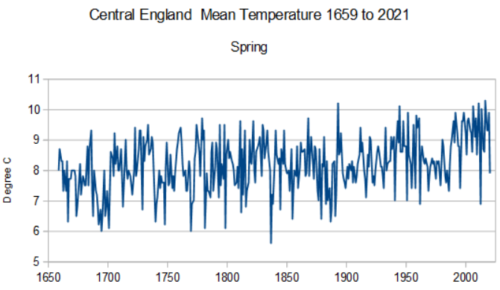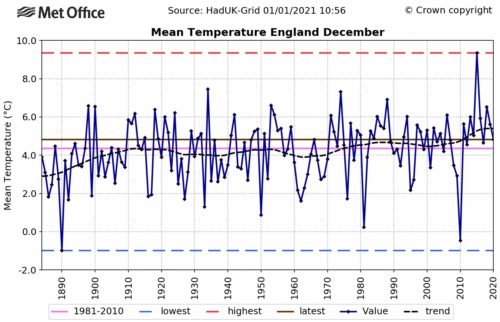
Joe has no obvious expertise for this, and quite frankly many of his articles are an embarrassment.
But now he has a book to sell, called Forecast: A Diary of the Lost Seasons.
So what better way to advertise it than with an article in the Telegraph, ‘Daffodils in December and swallows in February – how climate change is sending our seasons haywire’.
Shute writes:
‘Among my most treasured books is a Ladybird series published in the early 1960s and entitled What To Look For. Written by the biologist Elliot Lovegood Grant Watson and illustrated by renowned wildlife artist Charles Tunnicliffe, each book is devoted to a different season and portrays a world in perfect balance: weather, wildlife and people all in equilibrium.
‘In winter, geese feed on surplus grain left over in the stubble field while dormice hibernate in their woven nests. Come spring, lambs gambol and the mad March hares box in the fields. By summer the swifts are screaming, wildflowers are in bloom, and adders slink out of their lairs to luxuriate in the warmth.
‘These books convey a sense of post-war certainty that the world will always be just so. Yet today what to look for in any one season is increasingly anybody’s guess. The warming climate is rapidly altering the traditional concept of the four seasons that has shaped the British landscape and culture for hundreds of years, and upon which all life depends.
‘Migratory birds such as swallows, for example, heralded in folklore as a harbinger of summer, are these days arriving from their African migration a fortnight earlier than when my What To Look For series was published, and breeding 11 days earlier. In recent years, swallows have been spotted by English county recorders as early as February, while there have been reports of the birds even over-wintering in the south of the country.’
All very bucolic, but what does the actual data tell us?
Take spring, for instance:

Our springs have certainly warmed up since the 1960s, but in reality, are still barely warmer than they were in the 1940s.
Renowned climatologist Hubert H Lamb, writing in 1982, had this to say about the rapid cooling in the 1960s:
‘The temperature changes since 1950 have affected the length of the growing season. In England, many farmers and gardeners are familiar with the turn to colder springs…
‘The net effect of these changes in England has been that the growing seasons have been on average about nine to ten days shorter since the mid-1950s, and the mean date of onset of spring at Oxford has changed from 4th March between 1920 and 1950, to about 20th March between 1963 and 1980.’
Climate change, Joe?
More fundamentally, we can see that there is no such thing as a normal, stable climate. It is a myth, something that exists only in Shute’s Ladybird books.
Our weather can and does fluctuate wildly from year to year, between hot and cold, wet and dry. It is impossible to predict from one year to the next, and Joe’s ‘post-war certainty’ is no more than an illusion.
Let’s take a look at another of Shute’s claims, daffodils in December:

In fact, mild Decembers are perfectly common throughout the record, and, with the exception of 2015, recent Decembers have been no warmer than many others in the past, no matter what Joe might think.
This latest article highlights just how poor so much of the Telegraph’s reporting has become lately.
Maybe they should start to correct this by appointing somebody to write the weather column who actually knows what they are doing!
Read more at Conservative Woman

















Sadly, this is true about the previously more open minded and more fair Telegraph. It sadly lost Christopher Booker and his exposure of the basic stupidity of wind farms etc, and the climate hysteria. It now basically seem to toe the line of the current “zero carbon ” religion, which of course is an absurdity trading on basic ignorance of the biosphere, chemistry, geophysics, the sun, etc etc etc. “Zero carbon” would quite simply mean the end of all life. So why they use such and absurd slogan has to have other reasons. These are James Delingpole’s Watermelons, green outside red hidden inside. Until you cut them open.
It is very common for those supporting the climate change cause to focus on natural variability and claim it is caused by climate change.